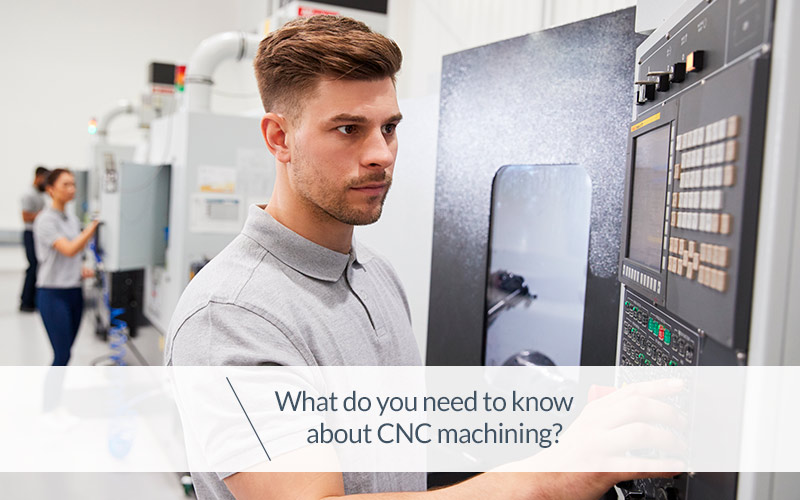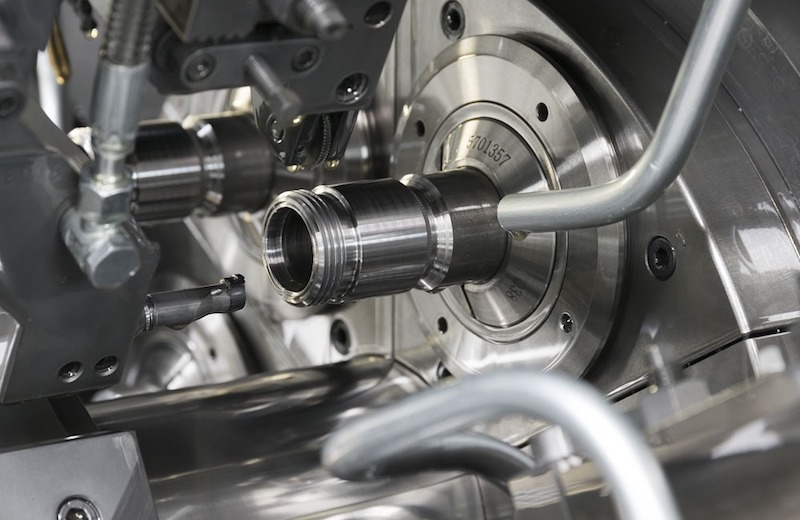
Industrial automation, which during the 20th century has permitted incredible technological advances in the manufacturing sector, is mostly based on the use of increasingly sophisticated machinery.
The dawn of the information age and the computerisation of machinery coincided with a reduction in production costs and an increase in machine capacity, over and above superior quality and precision levels.
Up until the 1980s, CNC machines (Computer Numerical Control) were used only in large-scale industries requiring a very high level of precision – today, on the other hand, technological advancements mean that CNC machinery is found across all production and industrial sectors, especially mechanical fields.
Let’s take a look together at what CNC machining, widely used within the FAIST Group, actually looks like.
Defining CNC
To fully appreciate what CNC Machining is, let’s first define the letters of the acronym.
As mentioned before, CNC is an acronym of Computer Numerical Control. This would suggest that a computer is operative within an industrial production process.
Indeed, CNC refers specifically to those machines which, to perform a specific function, require a computer to control their movements.
For example, for a milling machine to operate well, it has to undertake precise movements to make the exact shape required: these movements can be set up, managed and checked via a computer, that is to say, dedicated software, which is connected to the machinery.

CNC machinery programming
Thus far, we have understood that CNC machines are machines and industrial tools that are connected to a computer which, via software, manage the machines’ movements. It is easy to see then, that for the computer to work it needs to be programmed, receiving very precise and specific instructions, which will manage its various parts.
Basically, there are three programming techniques for CNC machines:
- Manual Programming
- Conversational Programming
- CAM Programming
Let’s dig a little deeper.
CNC Manual Programming
Manual programming involves plenty of calculations and checks without the aid of a computer.
Indeed, in this instance, the programmer just works in the same language which will then be used by the CNC machine, creating a step-by-step sequence of commands which will make it work.
This allows the programmer to monitor the production operations carried out.
Manual programming permits the machines to receive extremely precise shaping instructions and efficiently adopt parametric programming techniques.
Furthermore, manual programming experts can solve problems related to tool instructions created by CAM systems, by intervening (no surprise here) manually.
It’s an old-school way of programming but still enjoys widespread usage, although it is limited to straightforward production processes.
CNC Conversational Programming
Conversational programming allows operators to easily generate programmes for the machinery in a matter of minutes.
The operator just enters a series of commands directly on the CNC (effectively instructions) which relate to the geometry of the production item in question, what it is made of, and the tools to be used etc.
Thus the CNC puts the instructions into practice, moving the machine accordingly.
Conversational programming is just right for the geometry of simple production items, that is to say, those that require 30 minutes or less of programming time.
Most conversational programming allows operators to manage production both from a graphics point of view and regards the steps taken by the machine, even before the machine is operative.
Programme modification is simple, as all the operator has to do is call up the specific production cycle and change the variable to correct or modify the programme.
CNC CAM Programming
A CAM system which automatically generates G-code language which manages CNC machines.
Nowadays, compared to a few decades ago, the cost of these types of CNC machines have notably declined, allowing much smaller businesses to purchase them.
CAM programming makes the operator responsible for the basic data input, including the item name, the number, the geometric description and the work to be conducted.
CAM programming becomes useful in situations where the operator has several machine models to programme which don’t necessarily share the same programming language, or for jobs which are hard to programme manually.
In most cases, it is possible to define the geometric shape of the production items by using CAD software and exporting it to a CAM system, saving huge amounts of time.
We need to add, however, that a CNC programmer who uses a CAM system also needs to have a thorough knowledge of manual programming, otherwise the results could indeed be poor.
The advantages of CNC Machining
CNC machining offers two major advantages: the repeatability of identical components and the production of complex parts, which require multiple simultaneous movements.
In both instances, the CNC machinery allows higher production capacity and increased and sharpened precision.
All FAIST Business Units work with this type of technology, for the production of complex, precise parts for some industries, and for the surface finishing and detailing of critical features in components for others. During the years, our team has been able to come up with solutions to increasingly stringent requests thanks to our engineering capabilities and can-do attitude.



